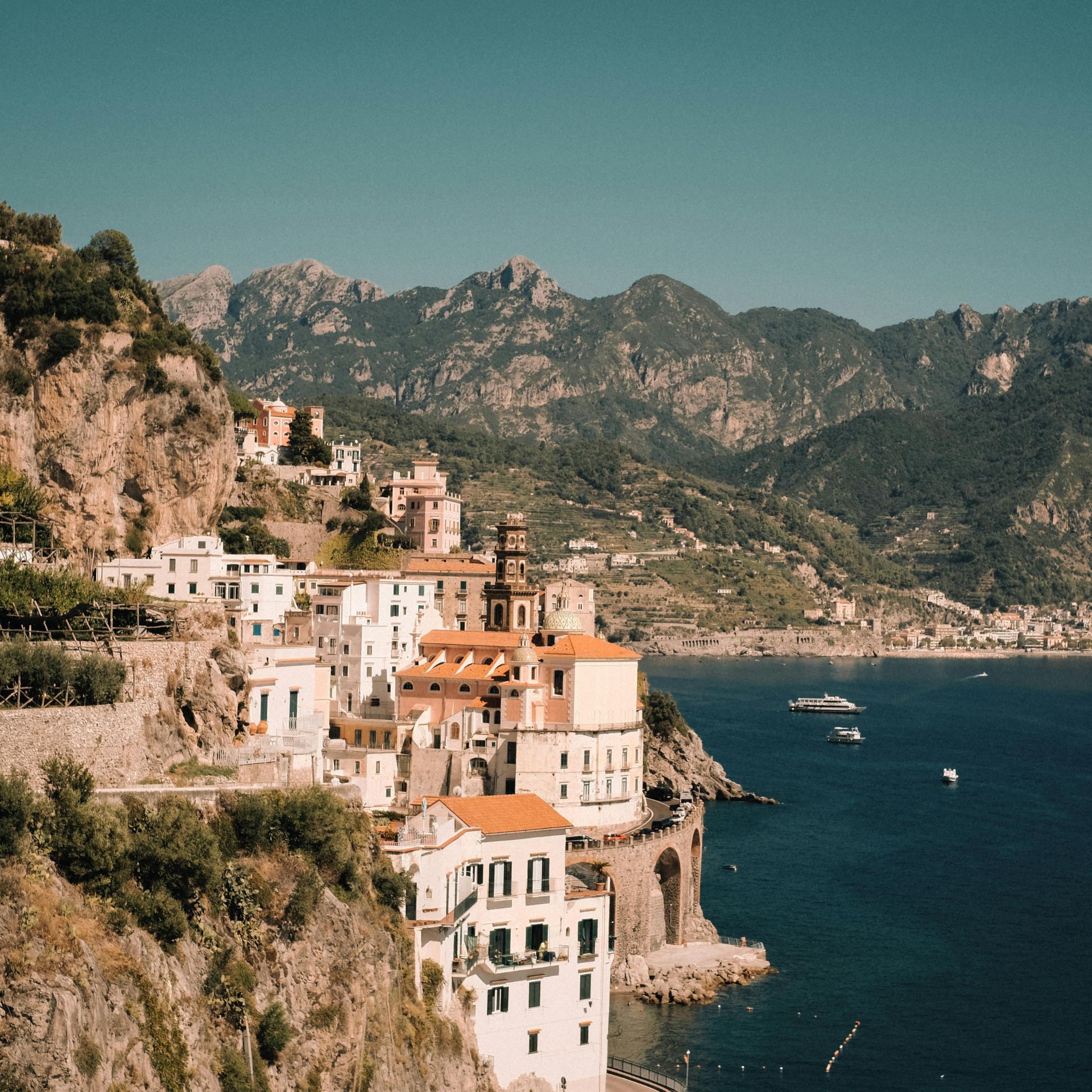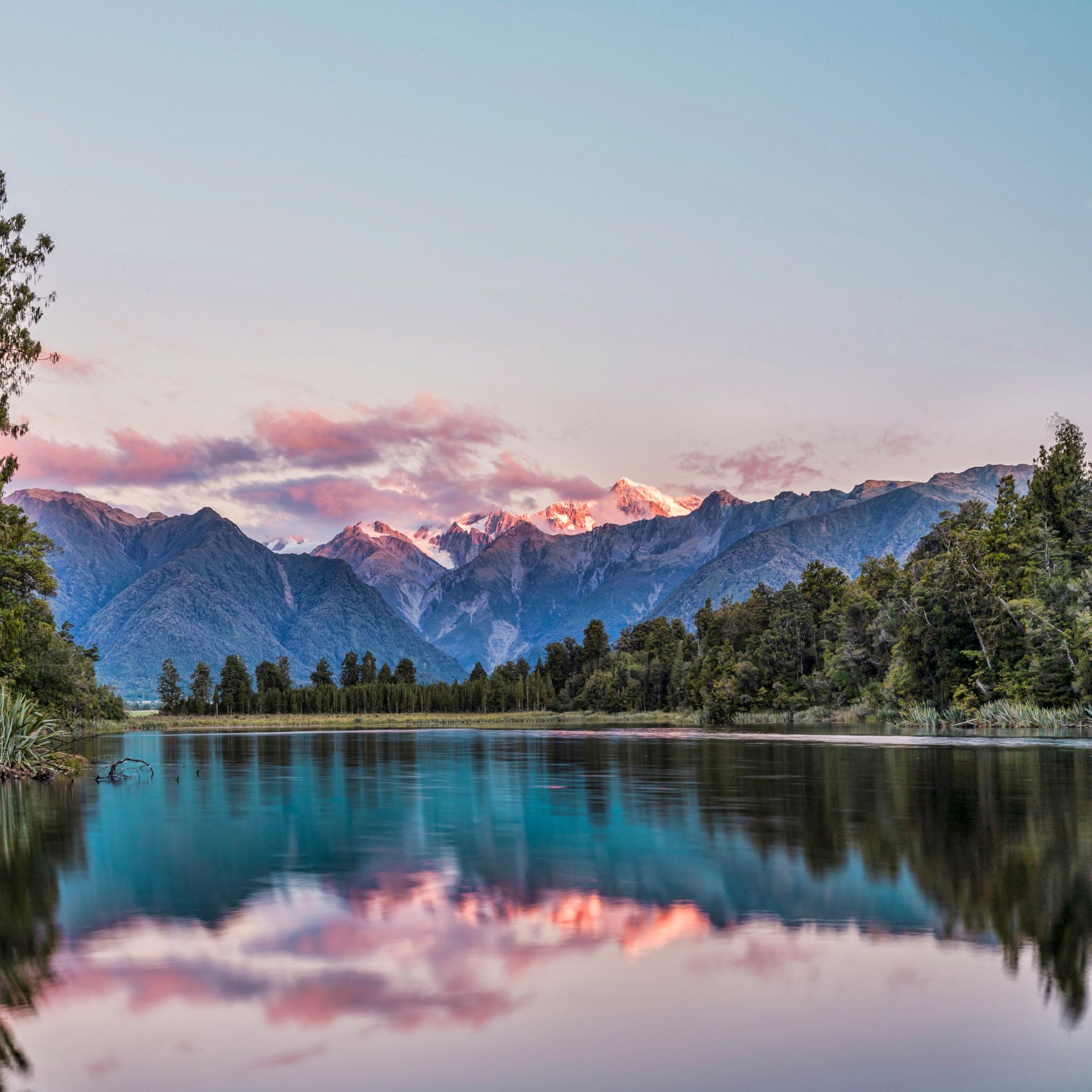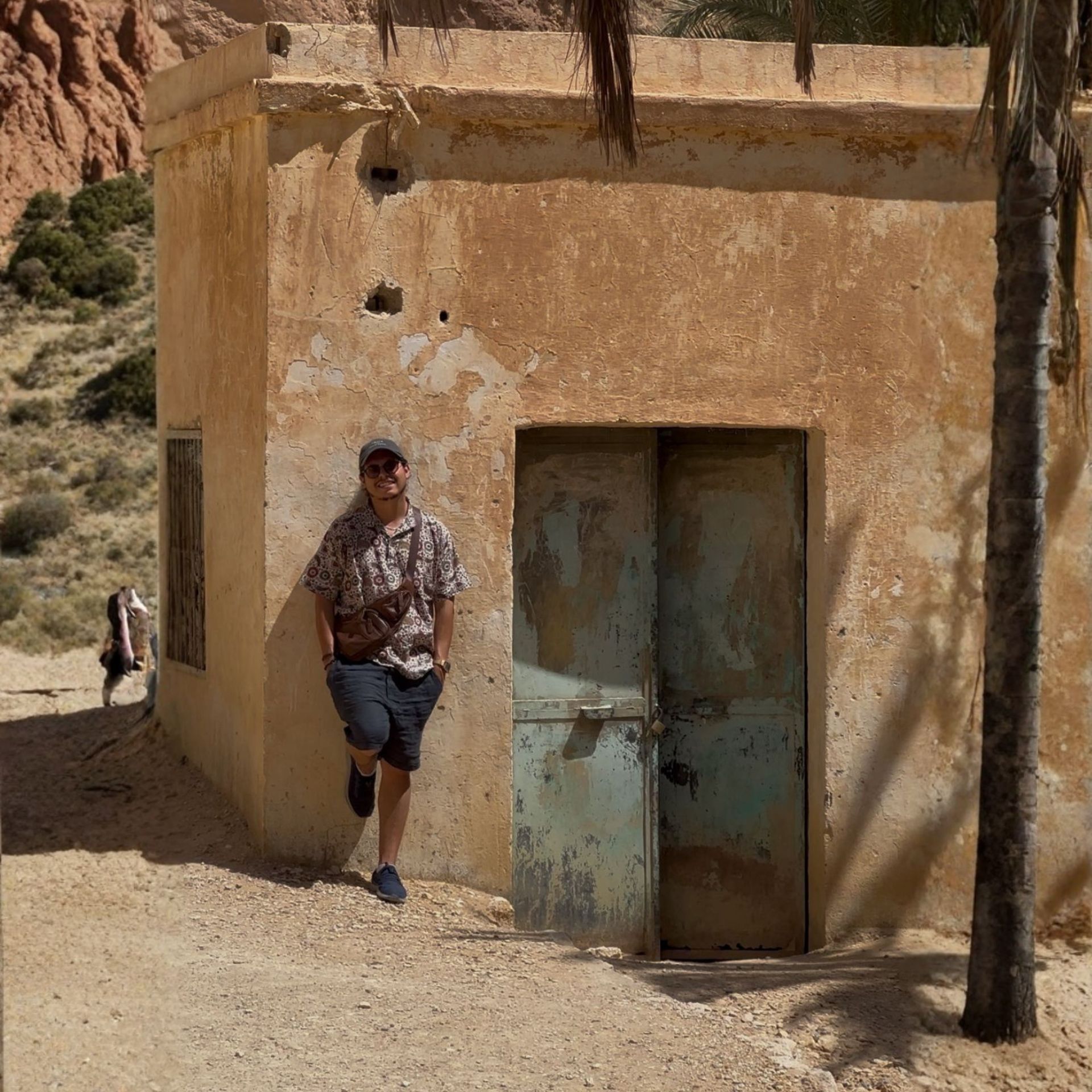Plan the perfect self-drive road trip in Namibia with this 2025 guide. Includes route tips, car rental advice, cost breakdowns & camping hacks from real experience.
After a quick Google search, I was intrigued to see how many articles with itineraries are on the internet about a road trip in Namibia. It seems to be one of the most popular topics in southern Africa and is not surprising at all. Namibia is one of the most interesting and safest countries in the region and some even call it “the perfect introduction to Africa”. However, while most of these guides are informative and provide a very nice description of the writer’s experience, they lacked on information about how to start planning a road trip and what are the basic rules to get around.
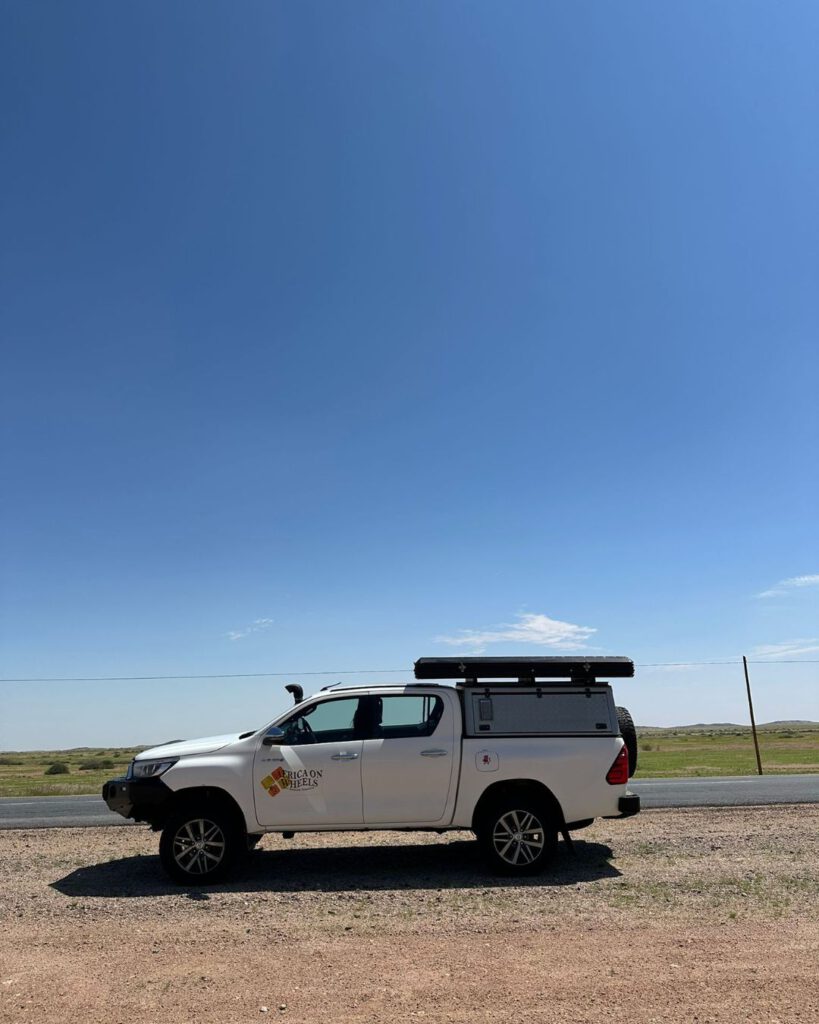
Understanding Namibia
I traveled to Namibia to work remotely and spent 6 weeks living in its capital and largest city Windhoek. From there, I did several road trips to different parts of Namibia and explored its natural and cultural diversity.
From coastlines and vast deserts in the western side to grasslands and savanna full of wildlife in the central and northern part of Namibia, this is a place where every day can be a new adventure.
At the same time, with extremely long distances to cover and lack of facilities in certain parts of the country, a road trip in Namibia should be organized carefully and taking every aspect into consideration. These are the do’s and don’ts when planning a road trip in Namibia.
Honestly, after years of road-tripping across the globe—from Patagonia to Iceland—I can confidently say that Namibia is the ultimate road trip destination. Yes, even better than Iceland. The landscapes here are simply otherworldly: endless gravel roads cutting through rust-colored deserts, wild camping under starlit skies, and spotting elephants crossing your path in Etosha. But what truly sets Namibia apart is the feeling of complete freedom—you can drive for hours without seeing another car, and every turn reveals a new, surreal scene.
For this adventure, I chose to rent my 4×4 from Africa on Wheels, and I couldn’t have made a better decision. Their vehicles are built for Namibia’s terrain, equipped with everything I needed for off-grid camping, and their team was incredibly helpful, providing detailed briefings and local insight before I hit the road. It was one of the smoothest rental experiences I’ve had anywhere.
Read more: How To Plan A Safari Trip On A Budget
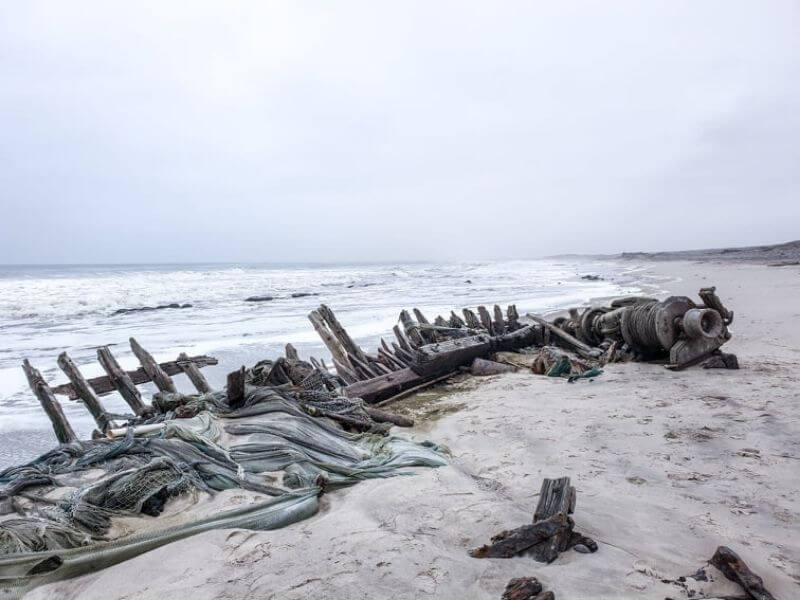
Planning and starting your road trip
Having the largest amount of international flight connections and greatest urban life in the country, Windhoek is the gateway to Namibia for most travelers and the best spot to start planning a road trip. This is the most convenient place to arrive and get everything you need without doing much effort. Rent your vehicle, plan a route, get groceries and enjoy a last glimpse of city life before embarking into the wilderness.
Urban Camp in Eros district is a great place to get some inspiration and tips for your upcoming trip. This camping area in the heart of Windhoek is a common hotspot for travelers crossing southern Africa by land and one or another crazy traveler bringing his/her car from Europe.
I also had the choice to get picked up by Africa on Wheels here or at the airport. Since my flight was arriving so late at night, I asked them to give me the vehicle early in the next morning.
Do you prefer an eSIM in Namibia?
I recommend an e-SIM with Airalo. With them, I bought a plan of 10 GB for my whole stay in the country.
Connectivity is key when planning a road trip – especially in Africa. Get a prepaid SIM card at one of the many MTC stores in Windhoek for just 10 NAD (6 EUR) and get credit for just 45 NAD. You can also get a MTC SIM card straight at the airport and ask the staff to help you add credit. Even though connectivity comes and goes outside of Windhoek, having internet everywhere can get you easily out of trouble.
INSIDER TIP: Prepaid internet plans in Namibia expire every 7 days. If you are planning to do a road trip for a longer period, you can either download the MTC app or get two codes with credit before your departure. Outside big cities, Namibia is quite desolated and it won’t be easy to find a place to get internet credit.
Large supermarkets can get also quite limited once you exit Windhoek. Try to get food and water supplies ahead (5 liters per day per person). If you are considering in going camping, don’t worry about the cooking. All camping spots have excellent cooking facilities, so preparing a proper meal shouldn’t be an issue.
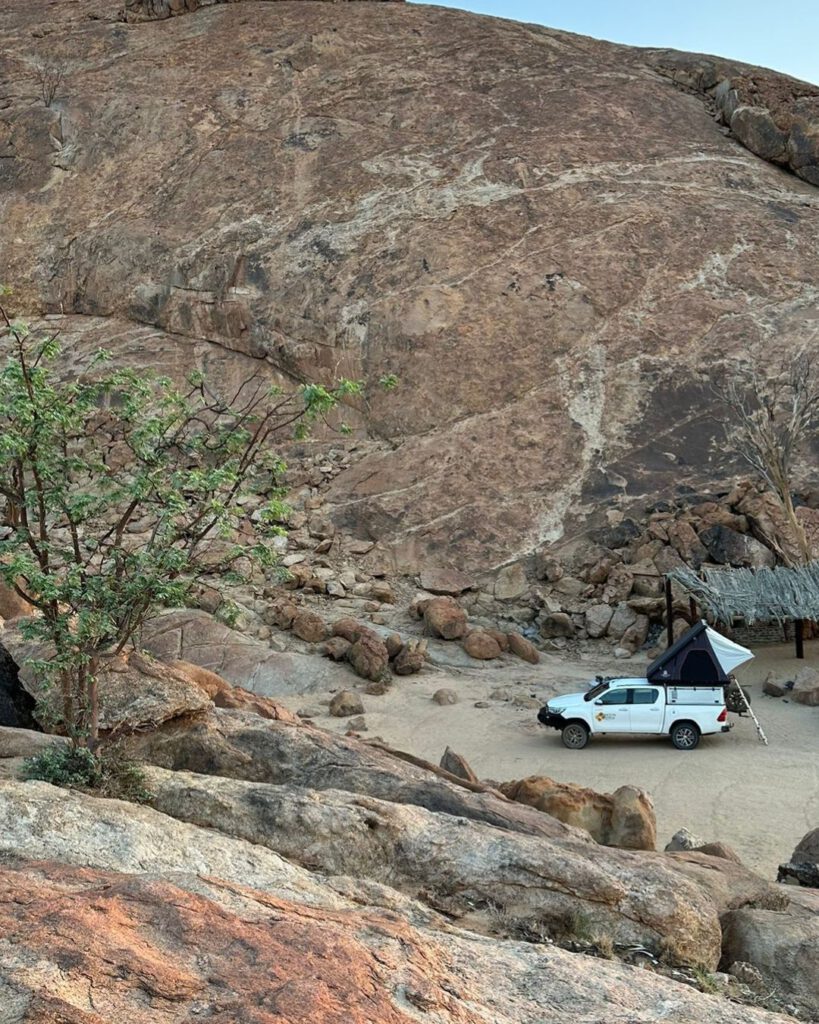
Additionally, just like in most parts of Africa, the use of credit cards and ATMs outside Windhoek is almost inexistent. The chances of finding a ATM outside a big city are almost zero and cash is considered king. In order to easily get around and avoid any trouble with payments, carry most of your budget in cash.
INSIDER TIP: Namibians use either Namibian Dollar (NAD) and South African Rand (ZAR). Both have the same value and are accepted everywhere. If you are worried to get stuck with some Namibian Dollar at the end of your stay, simply go to a bank and exchange your NAD in ZAR. South African Rand are way more spread in southern Africa and if you are planning to keep traveling around the region, carrying already some rand can be quite useful.
How to rent a car in Namibia
Namibia is a 4×4 land and renting a small vehicle in order to save some money is a big mistake. Even though the main highways are in excellent condition, all natural hotspots around the country are only accessible through dirt- and off- roads.
Of course, renting a larger vehicle means having a higher cost. However, with most 4×4 rentals including excellent camping equipment and rooftop tents, road tripping and camping is the preferred choice for most travelers in Namibia. Additionally, with camping spots starting at 5 EUR, getting a 4×4 with tents and doing a multiple day camping road trip is by far the cheapest and most convenient choice to easily move around and explore Namibia independently.
Read more: How To Plan A Self-Driving Trip In Etosha National Park
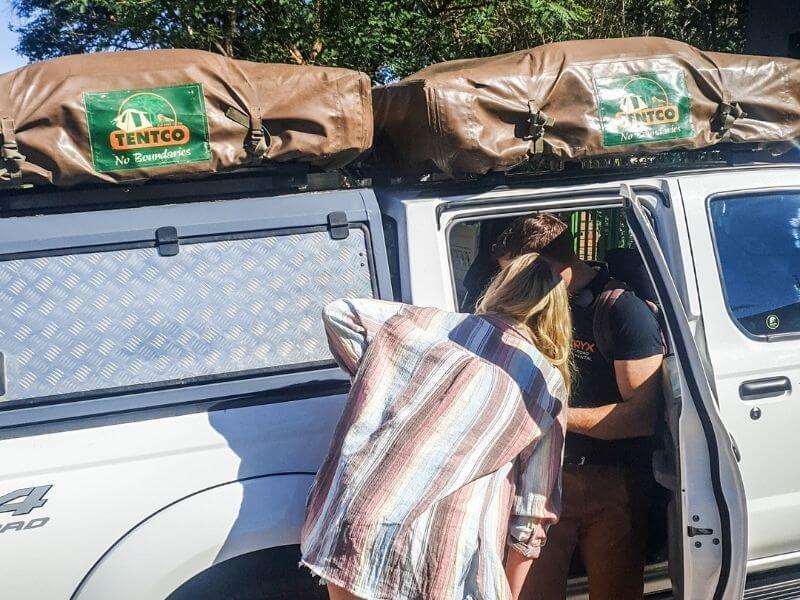
NOTE: Learn properly from your car rental company how to change a flat tire or deal with basic vehicle issues. These are problems that happen extremely regularly. The best way to not get stuck somewhere in the middle of nowhere is by learning how to fix it.
Large companies like Hertz and Avis have offices in Namibia. However, to get the best price and value for your trip, get in contact with local 4×4 rentals. They might not offer the newest vehicles in the market, but they offer better conditions, pricing and by booking with them, you are supporting the local economy.
Best car rental companies with overhead tents in Namibia
Some of the most reliable local companies for renting a 4×4 are:
- ORYX Off-Road Car Rental (I used this company twice for a long weekend trips)
- Africa on Wheels (I rented their vehicles once for a 6 day getaway from Windhoek)
- Namibia 4×4 Hire
- Okavango Car Hire
NOTE: The price for a 4X4 rental depends mostly on the season. However, the average price per day should be anything between 80-100 EUR. Most 4×4 camping vehicles are also equipped with pans, pots and everything you need for cooking a feast – cars companies also provide salt, pepper, oil and even an additional tank with water for cooking.
Read more: The ultimate packing list for a camping trip in Namibia

How to plan a route in Namibia
With an area twice as big as Germany, 12 completely unique national parks, dozens of private conservancies and several protected areas for game activities, doing a road trip in Namibia and expecting to see it all would require a lifetime. No matter if you go south, north, east or west from Windhoek, there is always something to see and explore.
While most road trip suggestions in Namibia take anything between 7 – 15 days, before you set up the places you want to see, take into consideration how much time you want to spend in a vehicle.
Distances are very long in Namibia and driving from A to B can take half a day or more. The more you pack on a road trip, the more tight your itinerary will be and the more stressful your trip will become.
Places like Etosha offer excellent safari experiences that would ideally require 3-4 nights to fully explore (6 hours from Windhoek), while a trip to the sand dunes of Sossusvlei is more a 1-2 day activity at maximum (8 hours from Windhoek).
INSIDER TIP: While self-driving is allowed in Etosha, local drivers with proper safari vehicles offer full day game drives at the entrance of the park for 25-35 EUR per person (for a group of 4 people). This can be a good option to have a relaxing day without being behind the wheel. Self-driving inside Etosha not only means driving for hours and hours in circles, but also not learning about animal behavior or understanding what makes Etosha so different than anywhere in Namibia.
Read more: Which are the most unique places in Namibia
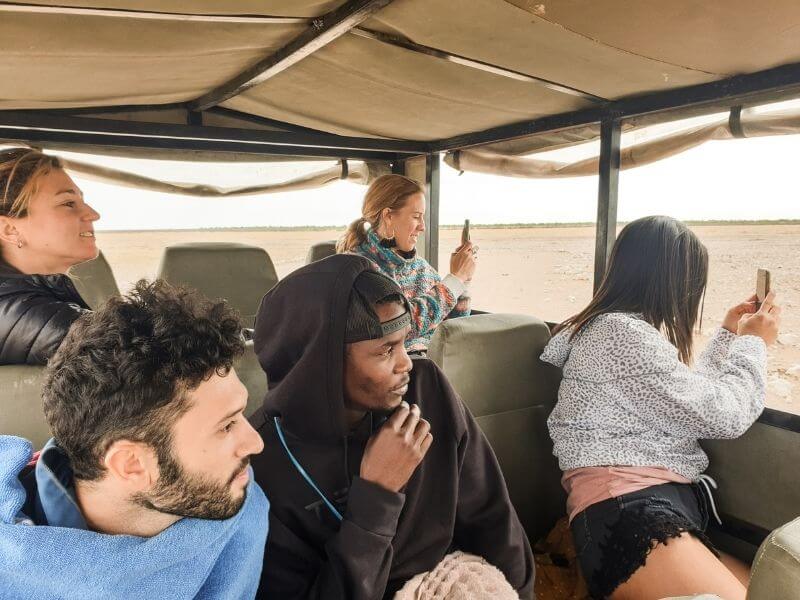
How much is a road trip in Namibia
| Expense | Details | Cost Range (EUR) |
|---|---|---|
| Car Rental | 4×4 vehicle (necessary for rough terrains) | €80 – €150 per day |
| Fuel | Approx. €1.10 per liter (average consumption 12L/100km) | €40 – €80 per day (based on distance) |
| Accommodation | – Camping: €10 – €30 per night per person – Lodges: €80 – €200 per night per room | €10 – €200 per night |
| Food | – Self-catering: €5 – €10 per meal – Restaurants: €10 – €30 per meal | €10 – €60 per day |
| Park Entrance Fees | Etosha National Park, Sossusvlei, etc. | €5 – €10 per person per day |
| Activities | Safari, sandboarding, guided tours | €50 – €150 per activity |
| Road Toll Fees | For certain roads and areas | €2 – €10 per toll |
| Miscellaneous | Maps, tips, souvenirs, etc. | €20 – €50 per trip |
Example of a 10-day Road Trip for 2 people:
- Car Rental: €1200 – €1500
- Fuel: €400 – €600
- Accommodation: €300 – €1800
- Food: €200 – €600
- Park Fees & Activities: €300 – €1000
- Miscellaneous: €100 – €200
Total Estimated Cost for 10 Days for 2 people: €2500 – €6000+
Is free camping allowed in Namibia?
Wild camping or Free camping is allowed when you get a permit from the owner. However, it is not a good idea. Usually, all land that looks empty to you will belong to someone. But don’t worry. Public campsites come at a very low cost.

Step by Step for a road trip in Namibia.
These are in my opinion the best steps when planning a road trip route in Namibia
Choose the places you want to visit
Namibia is filled with incredible landscapes and wildlife, so choosing where to visit largely depends on your interests. Some must-see spots include Etosha National Park for wildlife, Sossusvlei for towering red sand dunes, Skeleton Coast National Park for dramatic coastal scenery, Damaraland for ancient rock art, and Kolmanskop Ghost Town for a glimpse of Namibia’s diamond mining history. It’s important to prioritize which locations fit best into your timeframe, budget, and the experience you want. For example, if you’re an avid photographer, Deadvlei in Sossusvlei and the shipwrecks along Skeleton Coast might rank higher on your list.
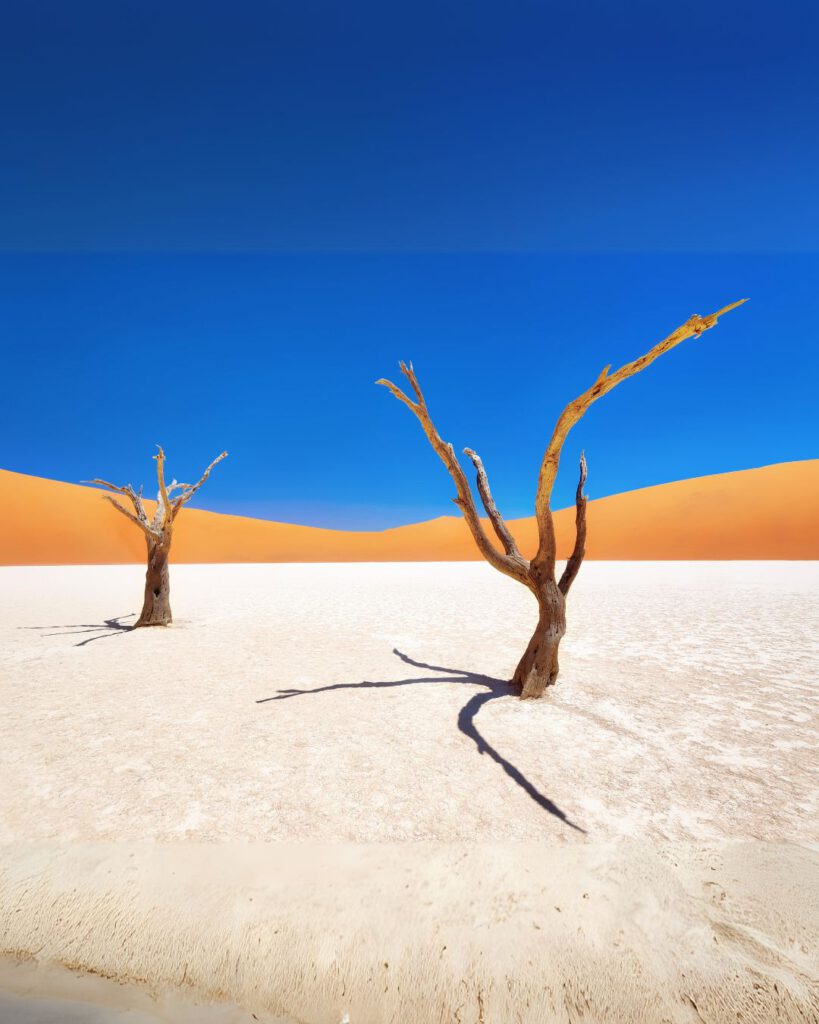
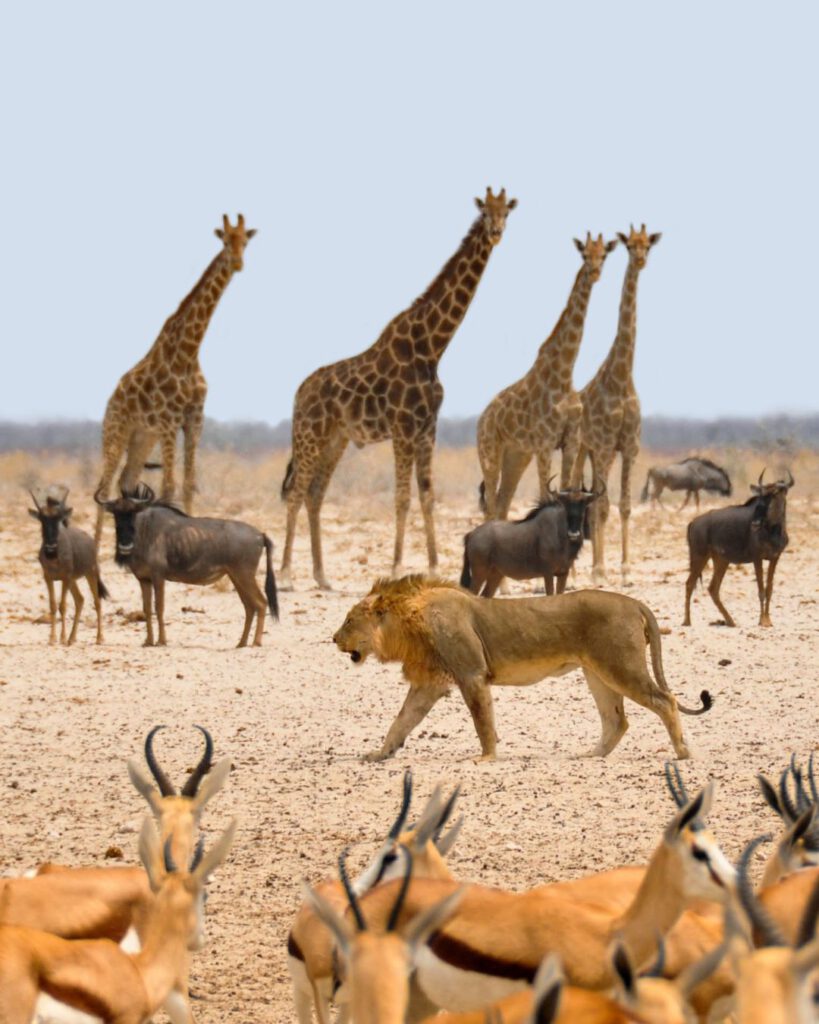
Find out which activities you can do there
Every region in Namibia offers different experiences, so it’s worth researching which activities appeal to you most. In Etosha, you might want to spend 2-3 days on wildlife safaris, spotting elephants, lions, and rhinos. Meanwhile, in Sossusvlei, 1-2 days are enough to climb the iconic dunes (like Big Daddy), explore Deadvlei, and photograph the incredible landscapes. You can also take a hot air balloon ride over the desert. If you’re in Swakopmund, spend a day doing adventure activities like quad biking, sandboarding, or even taking a scenic flight over the Skeleton Coast. It’s essential to balance activities with relaxation time, so you don’t exhaust yourself with back-to-back excursions.
Check on Google Maps the distances
Namibia is vast, and travel times between key destinations can be long, so using Google Maps to understand the distances between each stop is crucial. For example, it’s roughly 5 hours from Windhoek to Sossusvlei and 6 hours from Sossusvlei to Swakopmund. It’s also important to remember that most of the roads in Namibia are gravel, which means driving can be slower than you anticipate. When planning your route, try to avoid driving after dark, as wildlife frequently crosses the roads, increasing the risk of accidents.
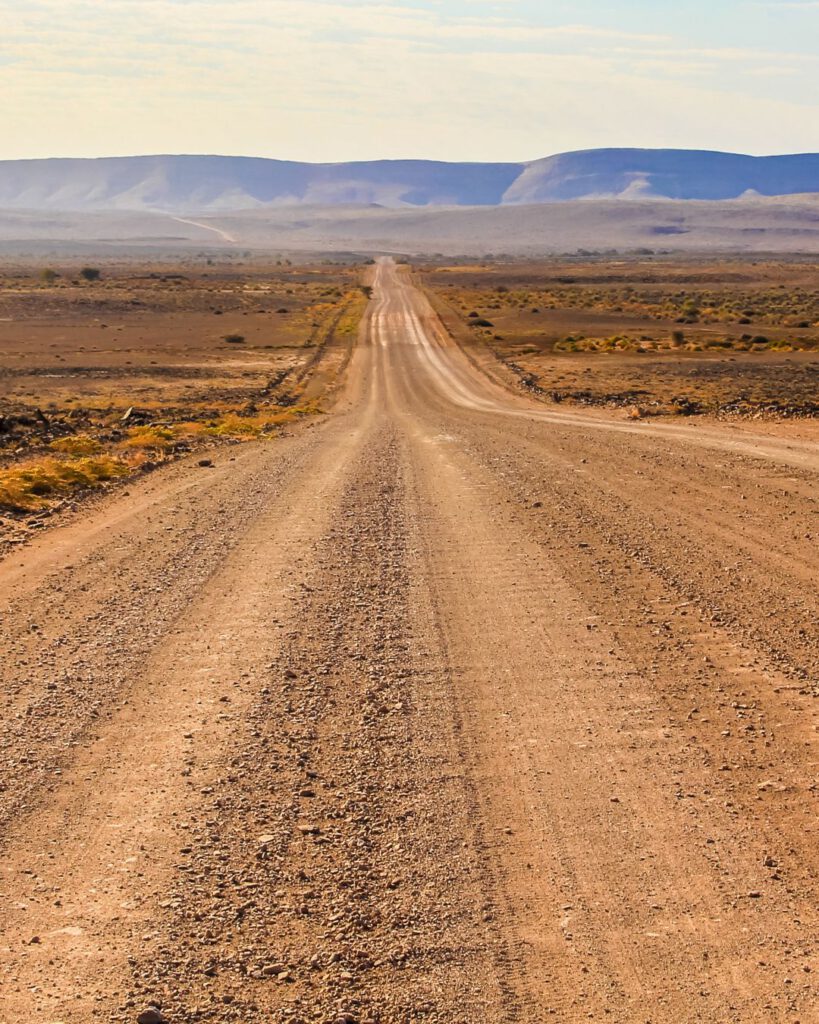
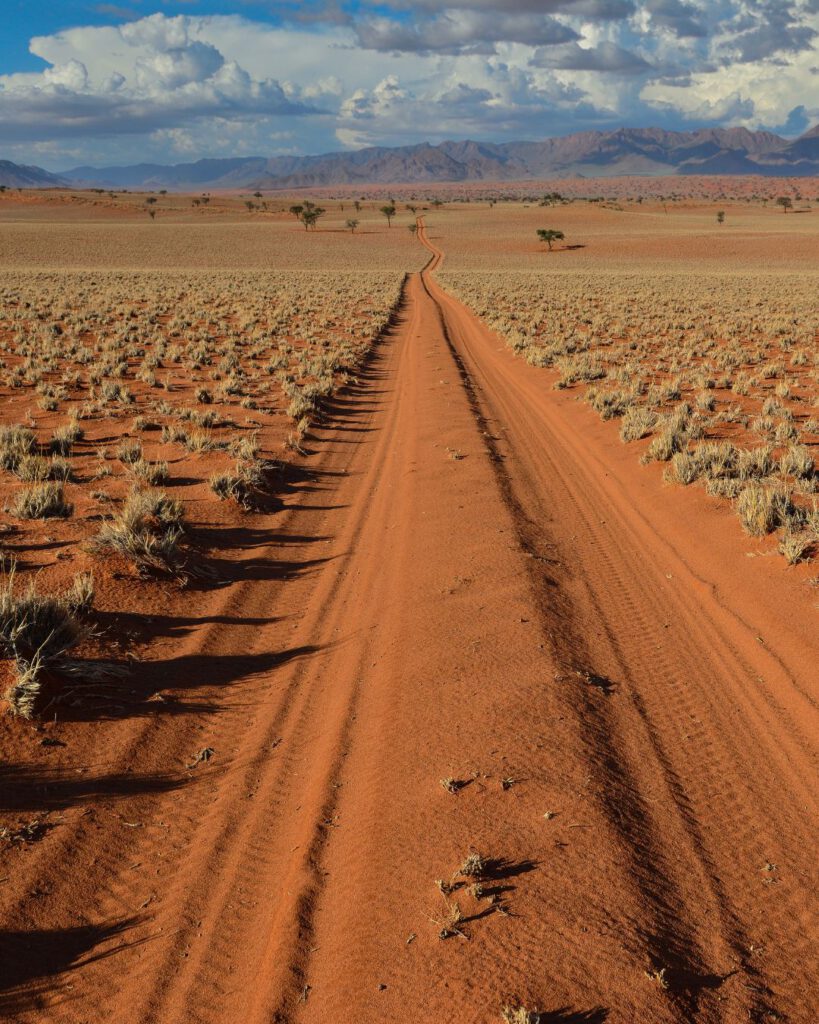
Create a travel route
Efficiency is key when creating your itinerary. If you want to maximize your time and avoid unnecessary detours, map out your trip in a logical loop. For example, starting in Windhoek, you can head southwest to Sossusvlei, then northwest to Swakopmund, and north to Etosha, before looping back to Windhoek. This way, you’ll avoid retracing your steps. If you plan to visit less-touristy places like Damaraland or Skeleton Coast, make sure they fit into your route seamlessly to prevent backtracking.
Plan your driving schedule
Namibia’s road conditions are often rough, particularly on gravel roads, which can slow down your travel time. Always factor in an extra 1-2 hours for each long drive to accommodate for unexpected delays, like tire blowouts or slower driving conditions. It’s also worth noting that gas stations are few and far between in some remote areas, so fill up your tank whenever you can and carry extra fuel if necessary. This additional time will ensure you’re not rushing to your next destination and can enjoy the scenic views or occasional wildlife sightings along the way.
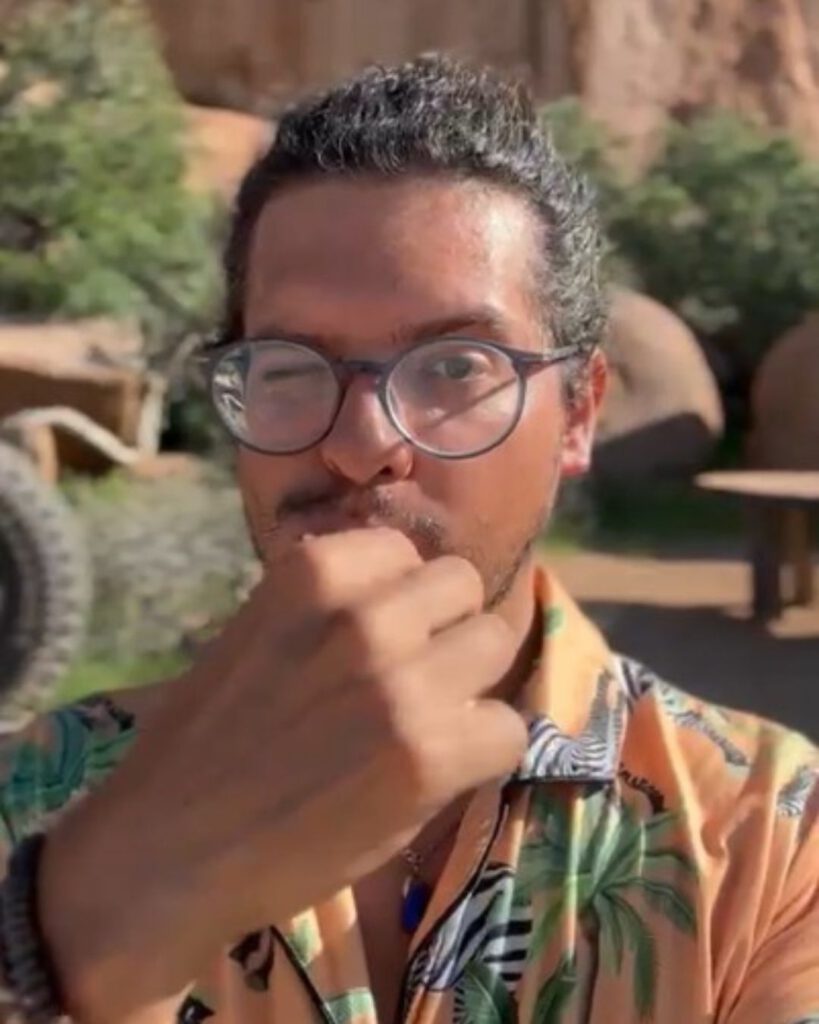
Additional Tips:
- Rent a 4×4 vehicle: Namibia’s rough terrain makes renting a 4×4 highly recommended. Many parts of the country, especially off-the-beaten-path places like Damaraland and Skeleton Coast, require a vehicle capable of handling rugged terrain.
- Pack essentials: The long drives between destinations mean you’ll often be far from services. Bring plenty of water, snacks, a first-aid kit, and any spare tires or tools you might need for road repairs.
- Book accommodations in advance: Popular destinations like Etosha and Sossusvlei often have limited accommodations, and they fill up fast, especially during high season. Booking in advance ensures you have a place to rest after a long day of exploring.
- Have cash handy: Many places outside major towns do not accept credit cards, so having enough local currency is important. Additionally, some remote gas stations may only accept cash.
Read more: Which are the best safari experiences in Africa
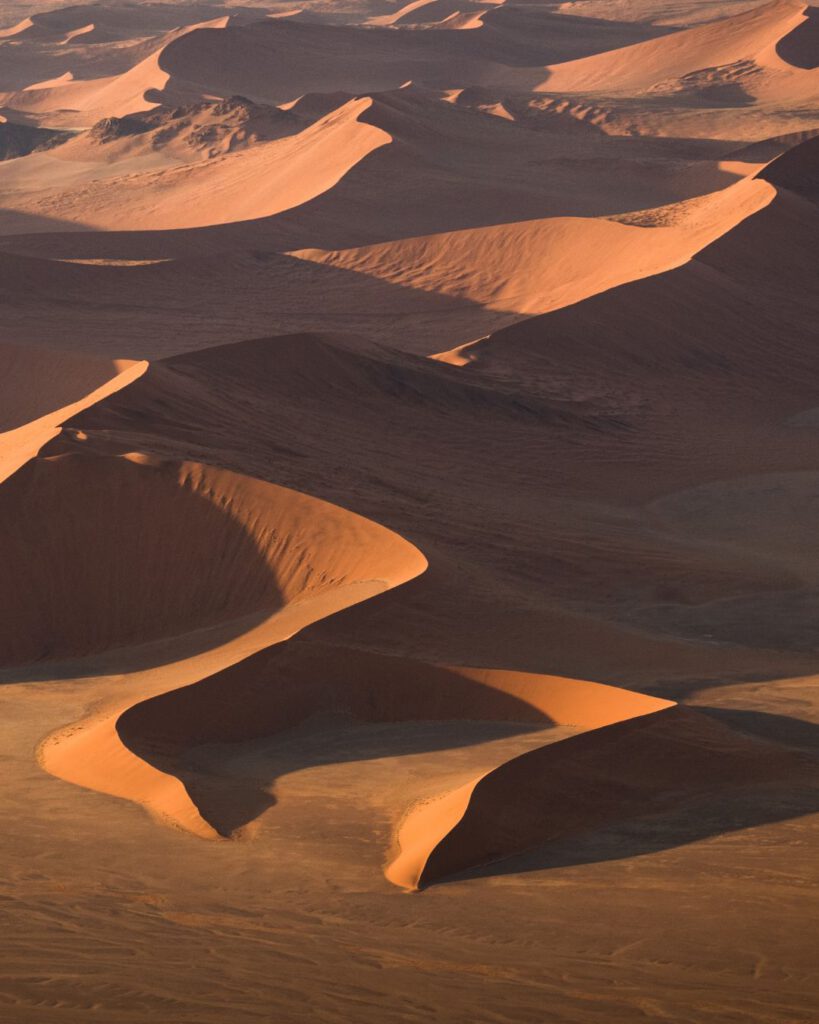
Best tips while being on the road
With a subtropical desert climate, Namibia is known for its great differences in day and nighttime temperatures. Hot days can turn into freezing nights in just hours and climate drastically change from one region to the next.
Keep also in mind that Namibia experiences winter and summer at opposite times as Europe. Temperatures in Summer (November – December) can go up to 35 degrees in the day, while temperatures in Winter (June – July) can drop below zero in some desertic areas at night.
Additionally, with one of the least dense populations in the world, Namibia can feel extremely solitaire. You can drive through the Skeleton Coast National Park and cover 500 km without seeing any other single vehicle. With this information in mind, remember to tank your vehicle every time you can. You never know when is the next gas station and even though most (if not all) 4×4 rental cars have a double gas compartment that can cover up to 1000 km, it is better to be extra cautious and avoid discomfort. A very basic rule for a road trip in Namibia: Any time you see a gas station, fill up.
Read more: Self-driving in Serengeti National Park – Is it really worth?
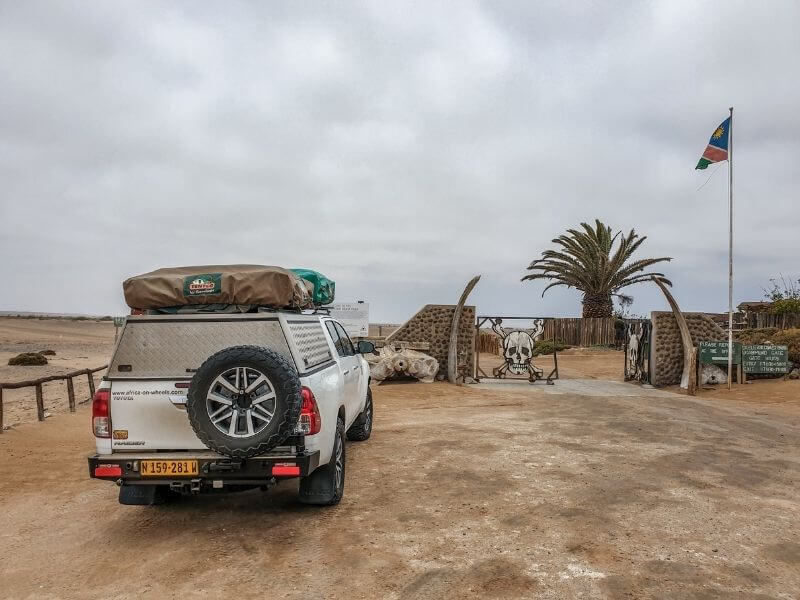
What is better? Self-drive or an organized tour
Namibia is probably the best country in Africa for self-driving. Prices for rental vehicles are cheaper in comparison to other countries in the region, maps and signs are constantly updated, safety is not a concern at all and there is a huge culture for road-tripping among locals and visitors.
A self-driving trip in Namibia does not only mean more comfort, but also better value, more experiences and more independence.
If cooking and camping is not your cup of tea, don’t worry. A road trip in Namibia does not necessarily mean a camping trip in Namibia. Lodges at all price categories are available in almost every tourist hotspot offering the warm bed you might need after a full day of driving – just remember that you might have to book in advanced.
Read more: Visiting the Okavango Delta in Botswana
Why Choose Africa on Wheels for Your Namibia Road Trip?
If you’re planning to explore Namibia by 4×4, Africa on Wheels is one of the most trusted and traveler-recommended car rental companies in the region. Known for their reliable, well-equipped off-road vehicles, they offer everything from rooftop tents to fully loaded camping setups—perfect for Namibia’s rugged terrain.
What sets Africa on Wheels apart is their personalized customer service, detailed pre-trip briefings, and local expertise. Their support was 24/7 and in countries like Namibia where communication is limited, having such a partner next by is a huge plus.
Africa on Wheels – 4×4 Rental Price Chart
| Vehicle Model | Type | Price per Day (From) | Camping Gear Included | Ideal For |
|---|---|---|---|---|
| Toyota Hilux Double Cab 2.4L | 4×4 Pickup | N$ 1,300 – N$ 1,500 | ✅ Yes | Budget-friendly off-road travel |
| Toyota Hilux Double Cab 2.8L | 4×4 Pickup | N$ 1,775 – N$ 2,780 | ✅ Yes (1/2 Roof Tents) | Versatile choice for most terrain |
| Toyota Fortuner | AWD SUV | N$ 2,030 – N$ 2,780 | 🚫 No (optional) | Luxury and family self-drives on mixed roads |
| Toyota Land Cruiser HJ 79 | 4×4 Pickup | N$ 1,765 – N$ 2,780 | ✅ Yes | Rugged conditions & deep sand |
| Toyota Land Cruiser HJ 76 | 4×4 Station Wagon | N$ 3,090 – N$ 3,390 | ✅ Yes (Large Groups) | Families or groups seeking comfort + camping |
| Toyota Land Cruiser HJ 300 GX.R (Bush Villa) | 4×4 Pickup + Equipment | N$ 2,950 – N$ 3,390 | ✅ Yes (Max 4 People) | High-end bush travel with full camping setup |
Read more: Why Wildlife Sanctuaries In Africa Are So Important?
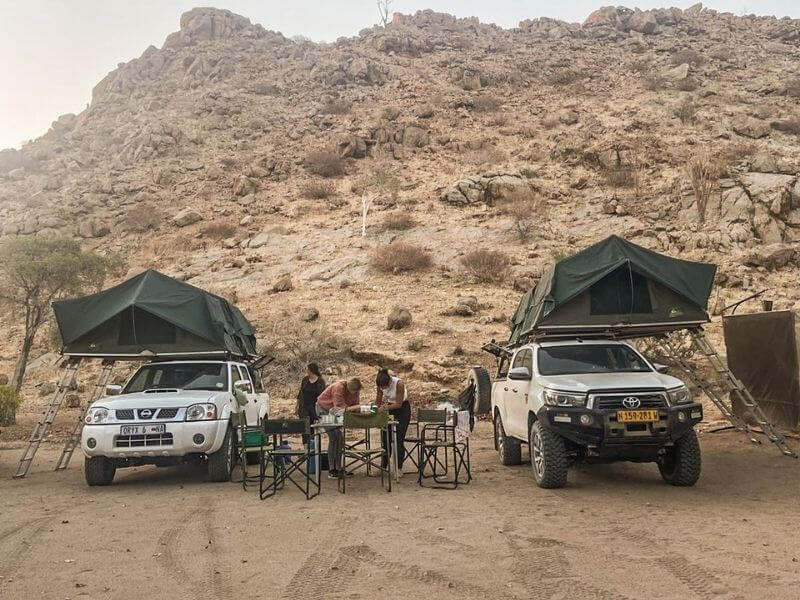
Frequently Asked Questions About Road Tripping in Namibia
1. Do I need a 4×4 to travel around Namibia?
Yes, a 4×4 vehicle is highly recommended for most routes in Namibia. While main highways are well-paved, the majority of attractions—including Sossusvlei, Damaraland, and Skeleton Coast—are only accessible via gravel or off-road tracks. A 4×4 also comes with the added benefit of rooftop tents and camping gear, ideal for long trips.
2. Is Namibia safe for self-driving travelers?
Namibia is one of the safest countries in Africa for self-driving. Roads are generally quiet, signage is clear, and locals are friendly. However, due to long distances and low population density, travelers should prepare properly: always fuel up when possible, carry water, and know how to change a flat tire.
3. How much does a self-drive road trip in Namibia cost?
A 10-day Namibia road trip for two people typically costs between €2,500 and €6,000, depending on vehicle type, accommodation, and activities. The biggest expenses are 4×4 rental (€80–150/day), fuel, and park fees. Camping is the most budget-friendly option.
4. Can I go wild camping in Namibia?
Technically, wild camping is only allowed with the landowner’s permission. Most land in Namibia is privately owned. Fortunately, public and private campsites are widely available and cost between €10–€30 per night per person, often with clean facilities and cooking areas.
5. What is the best route for a 10-day road trip in Namibia?
A classic 10-day Namibia itinerary includes:
Windhoek → Sossusvlei (2 days) → Swakopmund (2 days) → Damaraland (2 days) → Etosha National Park (3 days) → Windhoek.
This loop covers deserts, dunes, wildlife, and coastline while minimizing backtracking.
6. What’s the best time of year to road trip in Namibia?
The best travel season is between May and October, during Namibia’s dry winter. The days are warm, nights are cool, and wildlife viewing in parks like Etosha is excellent. Avoid summer (November–March) due to heat and occasional rains.
7. Are there gas stations in remote parts of Namibia?
Gas stations are limited outside major towns. Always refuel when you have the chance, especially before entering areas like Skeleton Coast, Damaraland, or Etosha. Most rental 4x4s come with double fuel tanks for added range.
8. Can I buy a SIM card or use an eSIM in Namibia?
Yes. You can get a local MTC SIM card at the airport or in Windhoek for cheap data plans. Alternatively, eSIM services like Airalo offer 10 GB packages that work across the country—perfect for Google Maps and emergency contact.
Read more: What are the best things to do in Windhoek
